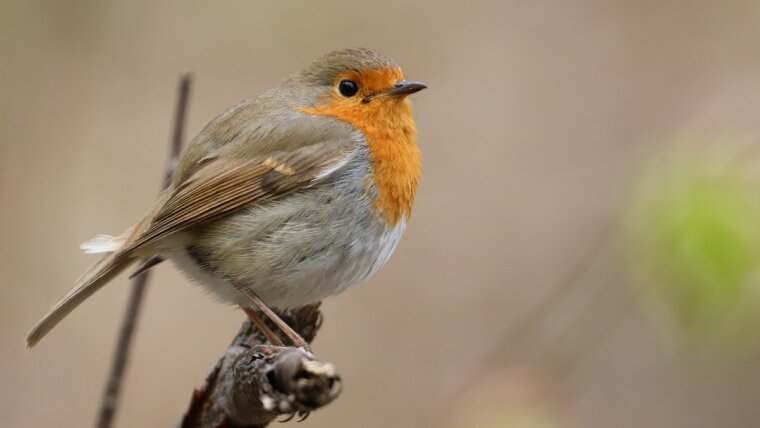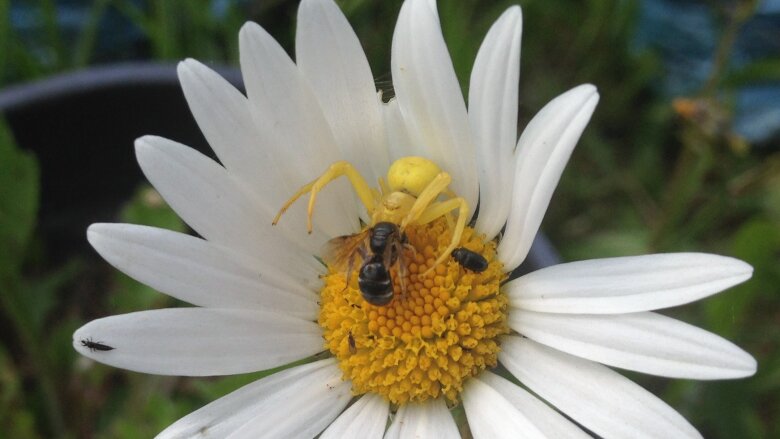
The Population Ecology Group covers four main research areas: Species networks and dynamics are the focus of the Community Population Ecology section. Local adaptation, temporal population dynamics and behavioural ecology are the focus of the Evolutionary Population Ecology section. And the genomic architecture of phenotypic polymorphisms and reproductive barriers involved in speciation are the focus of the Molecular Population Ecology section. Furthermore, we are active in the development of biostatistical and survey methods as part of the Population Ecology Methods section. For specific ongoing projects see our projects site.
-
Evolutionary population ecology
We are interested in understanding how populations change over time and in particular how they adapt to a changing environment. To this end, we use selected species of insects (mostly orthopterans) and birds as model systems. Understanding the adaptive dynamics requires a thorough understanding of the selective regimes and of the patterns of inheritance. We study selection using controlled populations in the field as well as controlled mate choice experiments in the lab and in the field. We combine measures of selection with an assessment of patterns of inheritance using artificial breeding and pedigree-analysis for studying the genetic architectures of complex traits. This work is rooted in quantitative genetic theory. A special focus lays on the maintenance of phenotypic polymorphisms in natural populations, in particular those that are shared among species and thus either are ancestral, arose by introgression, or by re-invention. Orthoperans and offer a fascinating case of a naturally replicated conspicuous green-brown polymorphism. Why and how such a conspicuous polymorphisms are maintained in so many species, offers an ideal case for understanding the role and evolution of intraspecific diversity.
Daisy
Image: Anne Ebeling -
Molecular population ecology
The development of modern genomic sequencing technology allows a yet deeper insight into the genetic architecture of non-model species than does quantitative genetics alone. We use population genomic as well as comparative genomic approaches using high-throughtput sequencing to study the genetic underpinnings of phenotypic polymorphisms in grasshoppers and birds as well as the population structure of species that live in patchy habitats. A central focus is the genetic basis of colour polymorphisms, in particular the widespread green-brown polymorphism in many orthopterans, but also colour polymorphisms in some birds. The systems we study have in common that phenotypic polymorphisms are shared across species boundaries. This enables us to address in how far shared ancestral polymorphisms, mutational re-invention of polymorphic states, and introgression by hybridization contribute to the long-term maintanance of the polymorphisms we study. Furthermore, we are interested in understanding the evolution of giant genomes in many species of grasshoppers that are characterized by a total DNA content that exceeds the human genome 2-3-fold or more.
Green Mountain Grasshopper (Miramella alpina)
Image: Holger Schielzeth -
Community population ecology
A central aspect for understanding population dynamics of individual species is an understanding of their environment, including the interactions among different species and trophic levels. Grassland habitats in particular offer a perfect model system for studying the interactions between plant- and consumer communities of different diversities or land-use regimes. The Jena ExperimentExternal link with its long-term manipulation of plant species richness in replicated plots offers a unique opportunity for uncovering species interactions. We aim to evaluate how changes in plant diversity can influence the ability of ecosystems to support complex consumer communities, by analyzing trait-based interaction networks, time series and recovery after disturbance events. Another large, collaborative, long-term project that we are involved in is the Nutrient NetworkExternal link that evaluates the global impacts of altered nutrient budgets on grassland ecosystems. The network provides insights into how nutrient-mediated changes in plant productivity or stoichiometry affect the consumer communities and ecosystem functions as herbivory or predation.
-
Population ecology methods
Methods development is rapid in ecological and evolutionary research. This includes statistical methods that become more and more sophisticated. We contribute to methods development and application with a particular focus on mixed effects models. Mixed effects models represent a particularly flexible class of statistical models that can be used to model complex datasets. We apply mixed effects models for estimating behavioral variability, for estimating genetic variation in complex pedigrees and for estimating spatial structure. An added complexity to mixed effects models is the generalization to non-normal trait distributions. Some traits and some biological phenomena are inherently non-normal and this represents particular challenges to statistical modelling and interpretation of the results. We contribute to the dissemination of new statistical developments by theoretical contributions, simulations and software development.
